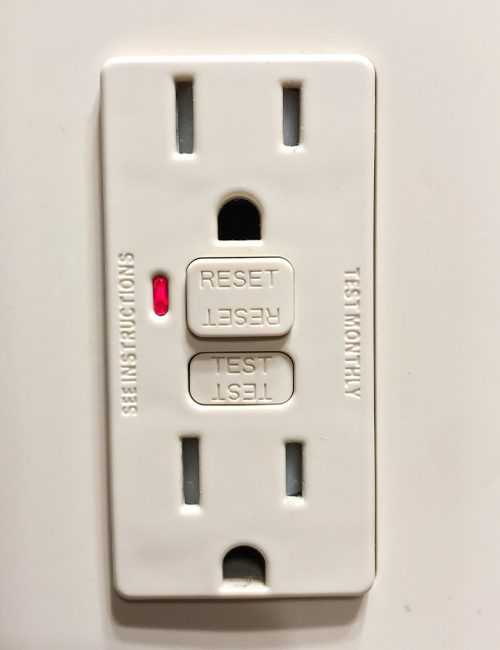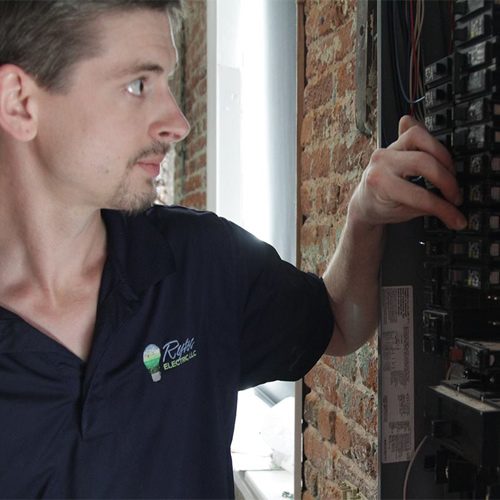Things to Check Before Calling an Electrician
When electrical problems pop up many homeowners immediately reach for the phone to contact their electrician; after all, electrical repairs can feel dangerous or intimidating! However, there are a few easy things to check that carry no risk of electrical shocks and may save you a service call!
Before picking up the phone, try out these tips to see if you can resolve your electrical issues without needing a professional electrician’s help!
Check that your device or appliance is plugged in
This might seem like it goes without saying, but over the years we have encountered many ‘electrical problems’ which merely required a plug to be inserted into a socket!
This sort of problem is most commonly encountered when the plugs are difficult to access like entertainment centers or home office setups with cluttered power strips.
Check that your outlet isn’t controlled by a switch
Another surprisingly common source of electrical problems which don’t actually require any electrical work are switch controlled outlets. Sometimes, just one socket in a multi-socket outlet is controlled by a switch, leading to electrical service requests.
If an outlet has suddenly stopped working, it is worth checking any mystery switches in the room to see if they may in fact control the non-functioning electrical outlet
Check and reset GFCI outlets
Outlets in your kitchen, bathroom, laundry room, or near sources of water are often protected by ground fault circuit interrupters (GFCIs). These are safety devices that provide protection against electrocution by cutting the electrical current to the outlet when unsafe conditions are detected.
However, the outlet will remain non-functioning until the GFCI is manually reset. GFCI protection can be installed on the outlet itself – or integrated into your electrical panel.
Outlet installed protection is most common, and is easily

identified by the “test” and “reset” buttons which are present on the outlet’s face. When a GFCI outlet is not working, try pressing the reset button and trying again.
In some cases, older GFCI outlets may fail and require replacement. If the outlet is constantly tripping or the reset button does not restore its functionality, contact a licensed electrician.
Check that your device/appliance is in good condition
While uncommon, electrical devices do occasionally fail. If it seems that an outlet suddenly isn’t working, it is prudent to test the device on a different outlet that is known to work.
Likewise, you can try plugging in a device which you know to work as a way of verifying that the problem lies within the outlet.
If there is a short circuit within an appliance, it can actually cause your circuit breaker to trip. In this way, a failing device can make it look like you have a problem with your home’s electrical system!
Check your breaker panel and reset any that are tripped
Ok, you’ve made it this far and the outlet still isn’t working! Now it’s time to take a trip to your circuit breaker and look for tripped breakers.
All of your breaker switches should be oriented towards the center of your breaker box. In most cases the switches themselves will be labeled ‘on’ and ‘off’ to show you how they should be positioned.
When a circuit breaker trips the switch will move towards the off position. Sometimes this is a relatively subtle change, with the switch ending up in the middle, so you may need to look carefully.
To reset the breaker, move the switch fully to the off position, and then return it to the on position.
GFCIs and arc fault circuit interrupters (AFCIs) can be installed at the breaker panel – and in this case there will be a white or yellow button next to the switch. These types of breakers are reset simply by pressing the button.
Unplug all devices in the circuit
If your circuit breaker pops shortly after you reset it, this may be an indication that the circuit is overloaded. Overloading a circuit causes heat to build up in the electrical wiring, and will cause it to trip.
The exact amount of time it takes for the circuit to trip will depend on how much you have exceeded the rated current of the circuit. A hugely overloaded circuit may trip in seconds, while a slightly overloaded circuit may take a couple minutes to trip.
To check to see if overloading is your problem, try unplugging all of the devices connected to the circuit (or switching off wired appliances) and then resetting the circuit. If the circuit continues to pop, this is an indication of faulty wiring or a failing circuit breaker and the issue needs to be addressed by a qualified electrician.
Still having problems? It’s time to call an electrician!
If your electrical problems persist even after trying these troubleshooting steps, the best idea is to call a reputable, local electrician.
Certain electrical problems should result in an immediate call to your electrician. If you detect signs of an electrical fire – such as a fishy or burning smell, charred or melted outlets, or smoke coming from any of your electrical fixtures – then call a professional ASAP. Depending on the severity of the issue, you may want to turn off the electricity at your fuse box until the issue can be assessed.

